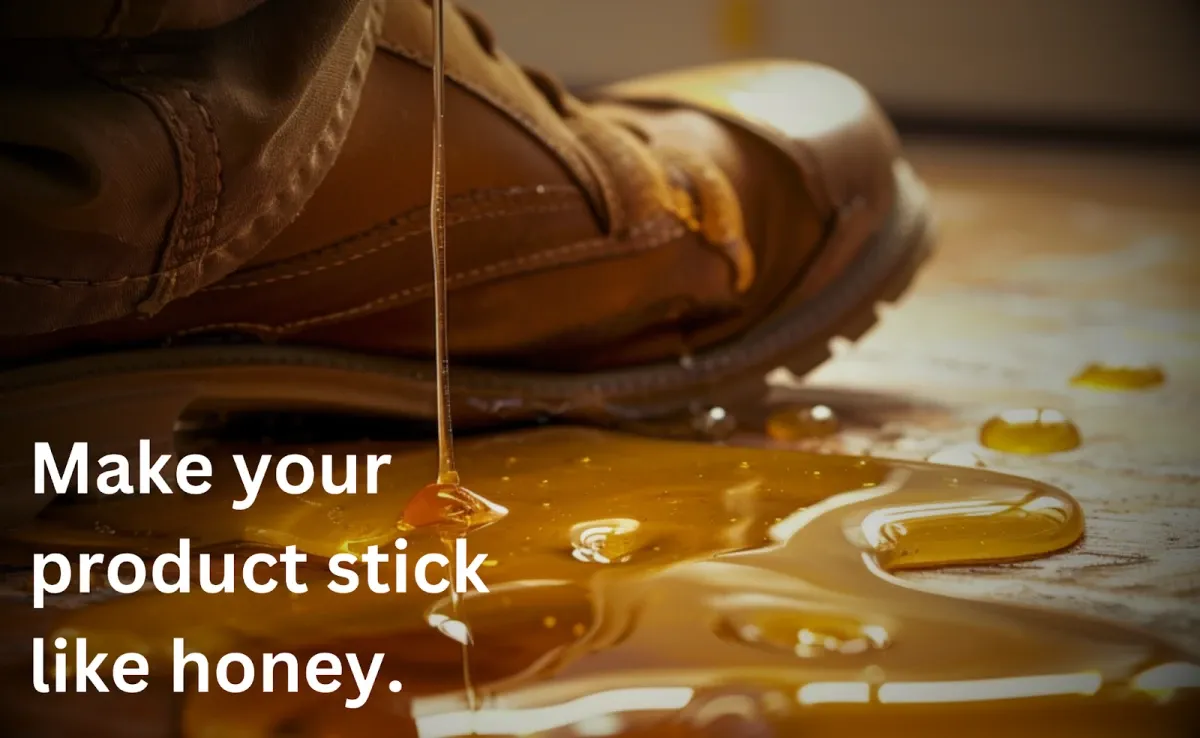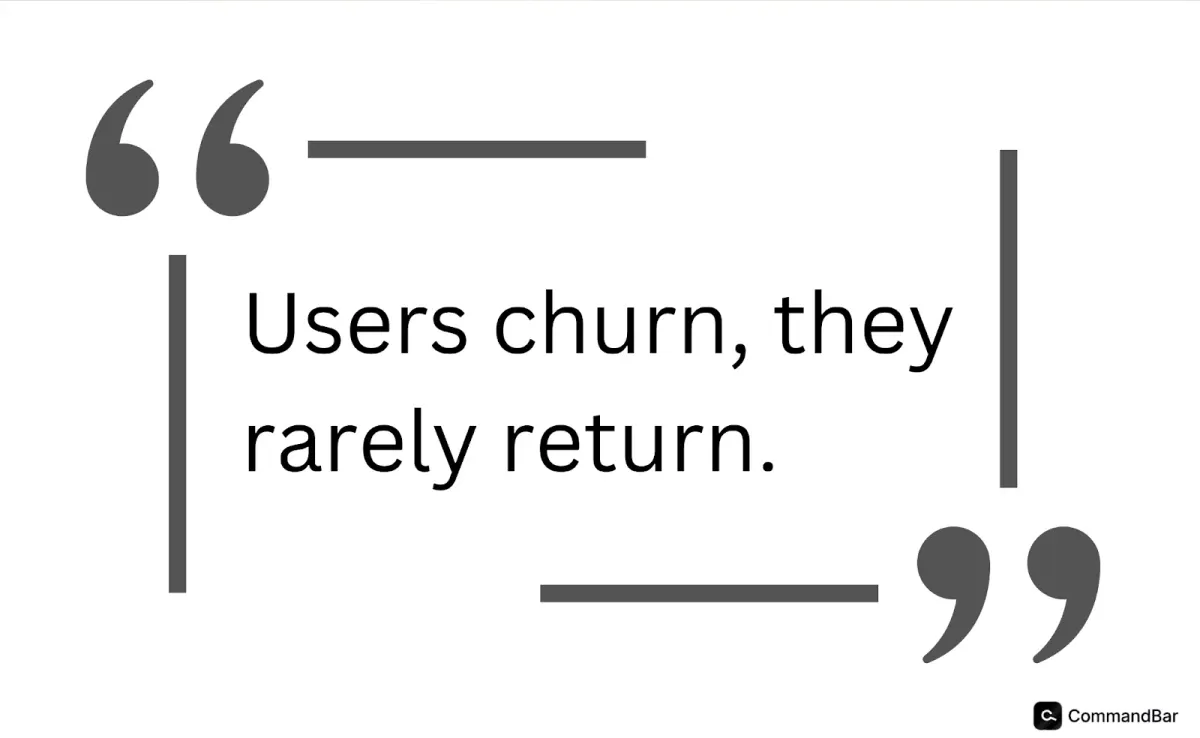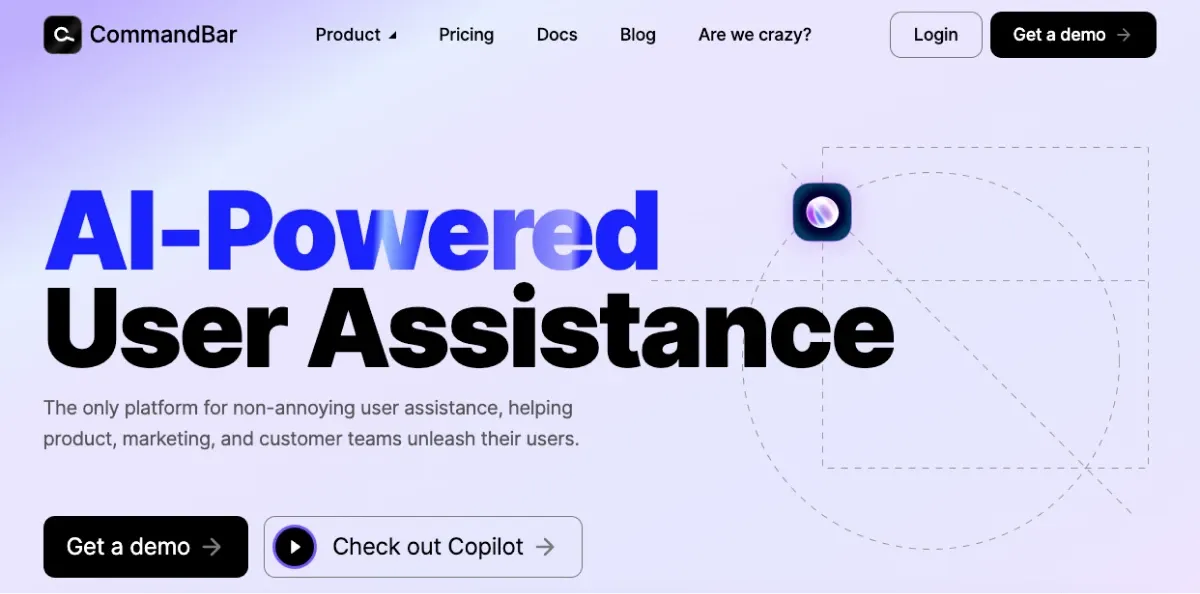Maximizing your product stickiness for referrals and revenue
Product stickiness isn’t rocket science. You can improve your app usability and increase customer loyalty with these principles. Learn how to decrease churn.

High customer retention might help you make it to the next month, but only product stickiness can maintain long-term growth.
It’s kind of like trying out a new coffee shop a few times. It might be good enough that you’ll go again, but is it so remarkable that you’ll go consistently a year from now?
I don’t care how charming your barista is. If the coffee and the experience don’t make you feel great, you won’t be returning for very long. Product stickiness helps keep customers, attract new users, and scale your platform.
Adding sugar to your coffee doesn’t automatically make it taste good. In the same way that you can’t hide bad coffee, you can’t hide bad experiences. But you can create an irresistible app.
Nail down product stickiness, and you’re on the right track. It starts by knowing what product stickiness is and how to apply the strategy correctly.

How to add that honey: What makes a SaaS product sticky?
Product stickiness occurs when your users engage with your app consistently and clearly understand the value you provide. App stickiness reaches its climax when those active users spread the word about your platform to their community.
All SaaS companies should aim for high product stickiness. Sticky products give you growth advantages and solidify your market position.
Mathew Pregasen, of the StartupOf newsletter, perfectly explains the benefit of a sticky product: “[S]tickiness makes the work of acquiring new users worth it. A product with bad stickiness could make money, but that revenue will struggle to scale as the product ages, and the retention rate will suffer.”
Ultimately, stickiness is about thriving. You can sustain and leverage current growth and ride it out long into the future. There are typically two types of stickiness that are important to measure:

The first stickiness is reflected in the usage rate
This signal serves as a short-term idea of your platform’s health. Usage shows you how often users log into the app. If it’s consistent and frequent, that’s a good sign.
The second stickiness reflects lower churn
The churn rate serves as the long-term signal for product stickiness. It answers the question: Is the product sticky enough that daily active users renew their subscriptions in the next billing cycle? If the churn rate is higher than you want, and users leave the app, you know your product wasn’t genuinely sticky.
The app may have caught attention briefly, as evidenced by its usage and customer activation, but it failed to continue beyond the initial excitement period.
Differences between product stickiness vs. user retention
Product stickiness metrics and subscriber retention get thrown together more than pancakes and maple syrup. It’s hard to separate the two. And it can leave room for confusion.
Both terms work together to help you understand customer satisfaction and the future of your app.
User retention measures the number of customers within a period or billing cycle. It helps companies assess the immediate health of SaaS.
Product stickiness is when customers consistently engage with your product, make additional purchases, and enjoy it so much they want to stay for the long term.
We can use both frameworks to improve the product continuously. User retention tells us the app’s current condition and health: are users still paying for the app? Product stickiness is a goal that will help us improve retention and other healthy customer metrics along the way.
If a product is sticky, and customers love using it consistently and continue to invest in the solution, then that level of satisfaction trickles down to everything else. Users spread the word, and you attract more customers (which means you keep more users as you improve stickiness).
Why does the industry baseline contextualize your stickiness measurement?
In the SaaS industry, 13% stickiness is often the average, 20% is considered good, and over 25% is great.
But these benchmarks vary with your industry and economic shifts. What’s important is to improve your current stickiness rate to one that promises sustainable growth.
Instead of playing the same strategy as other companies by forcing experiences, you can aim to become the leading app in your industry and claim the best stickiness in the market through personalized journeys.
SaaS leaders often think, “If we show them as much value as possible, we’ll win new users immediately.” But that’s far from the truth.
You can’t overwhelm users with all your new features at once and bombard them with popups like a flash mob.
There’s an art to it.
Companies can instead provide personal journeys that meet unique customer needs immediately. Like a successful romantic date, your app introduces value with class, putting the user first.
Analyzing product stickiness based on cohort
Product stickiness doesn’t exist naturally within every group. The goal is to get your product to stick with one group and then find a way to iterate and ensure it’s sticky for everyone through unique journeys.
The temptation is to go straight for the prize, like how you wish you could eat the cheesecake at the buffet before you eat your meal (nice try). So, what does a SaaS do? The platform tries to tackle everyone in one fell swoop. But people work differently.
Some users found you through a promo, while others got a referral from a friend. These types of acquisition differences already affect the level of brand trust and expectations users have for your app.
Then, there’s the behavioral aspect. Some users like to dive in when they learn something, while others want to take their time and follow methodical steps. And there are users who like to do a little bit of both.
These differences, along with habits, interests, needs, and preferences, create dozens of different types of users. If you address all users as if they are one group, you risk alienating many users.
This is especially evident during the onboarding process.
Someone signs up for your app because they read in a blog that the solution will help them do payroll. But the long product tour tries to teach the user how to implement HR community-building perks and programs. That person will be on the way out if they can’t quickly learn how to use your solution to get the job done.
Instead, that app should’ve been prepared to immediately serve both user intents (payroll and HR programs) based on the customer and the survey response they provide.
By segmenting audiences and analyzing them through cohorts, you can better understand what each user group needs from your app. Throughout the studies, important audience cues can be detected, such as shifting trends, user experience frustrations, and unfulfilled needs and requests.
You can use this information to improve product stickiness segment by segment. Then, the product will feel like it belongs to that unique user base instead of being a slightly disconnected wholesale user experience.
When users churn, they rarely return: The importance of personalization
Think of the first movie that you fell in love with. As you watched it, you had a personal experience. You didn’t like it simply because everyone else did or for the same reasons they liked it. The movie connected with your interests and experiences.
We must provide the same personal connection when introducing apps to new users. However, unlike movies, apps have many moving, interactive pieces that can influence the user.
If you force one way through a rigid product tour and intrusive popups, you will provide poor experiences. And those moments do the opposite of stickiness—they repel users.
Instead, you can create a sticky experience.
Jordan Santos, founder of Inertia Labs, a product design company, stated in a Command AI interview: “If your product doesn’t engage users within the first minute, most of those users will abandon your product altogether. Intuitive interfaces that actually help a user accomplish a goal make the difference between success and failure.”
So what does the right stickiness approach look like? One example is if users sign up for your app and get a quick microsurvey. By adding user needs and interests to the form, companies get direct first-party data to know what the user wants.
Those users don’t have to go through a generalized experience. Instead, they get exactly what they want immediately.
For example, if the user wants to design a graphic, the onboarding journey will take them to that use case. This experience contrasts with poor onboarding, where a similar app might take that person on a product tour focused on team collaboration—it hurts the new user journey.
Shortening the time-to-value window so users reach the aha moment immediately increases the chances of stickiness.

From there, you want to implement intuitive and engaging experiences. Instead of popups, users get nudges that gently point them in the right direction. Checklists serve as customized roadmaps to features where users can follow curiosities and learn differently instead of through a rigid forced process.
Apps can also implement AI chat assistants, where users can ask questions and get answers to their inquiries. Through universal search, they can find the resources they need. Users can also contact your team through in-app feedback.
These features provide tighter user feedback loops that allow for identifying deadends—user frustration points that go unsolved. These are valuable sources of information.
Say, for example, that a user searches for a question but doesn’t get a satisfying answer. This lets you know it’s a pain point you need to either fix within the app or a signal to include improved learning resources for the user.
Deadends reveal opportunities to enhance a product’s stickiness. They’re also a great way to identify a trend. If users increasingly search for a type of function or feature, you can note those inquiries and develop a satisfactory solution.
This intimate strategy, which incorporates data, personal solutions, and customer nurturing, can build a stickier product.
Product engagement pitfalls companies tend to overlook and what to do instead
In Seth Godin’s book The Purple Cow, he asks: What’s the one thing that would make your product or service so remarkable that people can’t help but stop and pay attention?
If you can create a remarkable SaaS platform that turns heads and continues to provide value, you’ll quickly reach product stickiness.
Unfortunately, too many companies keep figuratively stubbing the same toe on the bedpost. Many concerns exist about customer attention and how companies force it instead of feeding it.
On an episode of The Undefeated Underdogs’ podcast, James Evans, co-founder and CEO of Command AI, states: “[Apps] take user attention for granted... Oftentimes, you can't take attention for granted because if you annoy a user, they assess that your product is hard to use [and] they are just going to bounce... if you are expecting the user to hang out in your product and learn all your terms... they aren't going to enjoy using it... that spells trouble long term."
Whether it’s confusing UX writing and design, forced experiences, or other frustration points, these moments scare users away. Products should feel so familiar and easy to navigate on the first try that users feel at home.
User attention is scarce. You compete with real-life distractions, push notifications, TV and online ads, and social media algorithms, not just similar apps.
There are a million other distractions at work, at home, and even while commuting, so the last thing users need is an app that says, “Hey buddy, you’re gonna need to spend a lot more time than you think to use this app. But trust us, it’s worth it.” That’s creepier than a clown in a rundown parking garage.
So here are the pitfalls all SaaS brands need to stop falling for: Stop making it about you. Make the user experience selfless. It’s about the customer, what they want, and how they want it.
Through the tactics I mentioned, like gentle nudges, personal onboarding journeys, and user assistance features, apps can nurture customers and offer the in-app guide experience needed to get products sticky. Your app can be stronger than flypaper (in a good way).
Staying on top of user behavior changes for lasting revenue growth
Product stickiness doesn’t last forever. Like tape, you can quickly lose strength—it’s only a matter of time.
That’s why it’s essential to continuously improve your app. You can adjust your product experience for long-lasting effects. Products should be easy to use and immediately get customers to their personalized solution.
Platforms can improve stickiness by tracking user behavior, adjusting for shifting trends and needs, and building natural and familiar experiences.
Design an irresistible, user-centric product with the right tool

If companies want to increase app stickiness, they need to choose a tool that puts users first.
Features like Command AI’s nudges (instead of annoying popups) and checklists point users in the right direction and give them complete control of the experience so they can explore their curiosities and needs. Plus, when users answer an onboarding survey right away, your platform can send them on the right user journey. This lets customers get to the exact aha moment they need in just minutes.
You can improve your own product stickiness ratio by creating an app experience that new customers love. All it takes is adopting a product stickiness solution and putting users’ needs at the forefront of your strategy to increase long-term adoption.
